The "Trophy Economy". The Commercial Exploitation of Marine Biological Resources in the Black Sea and the Sea of Azov / 2014–2021
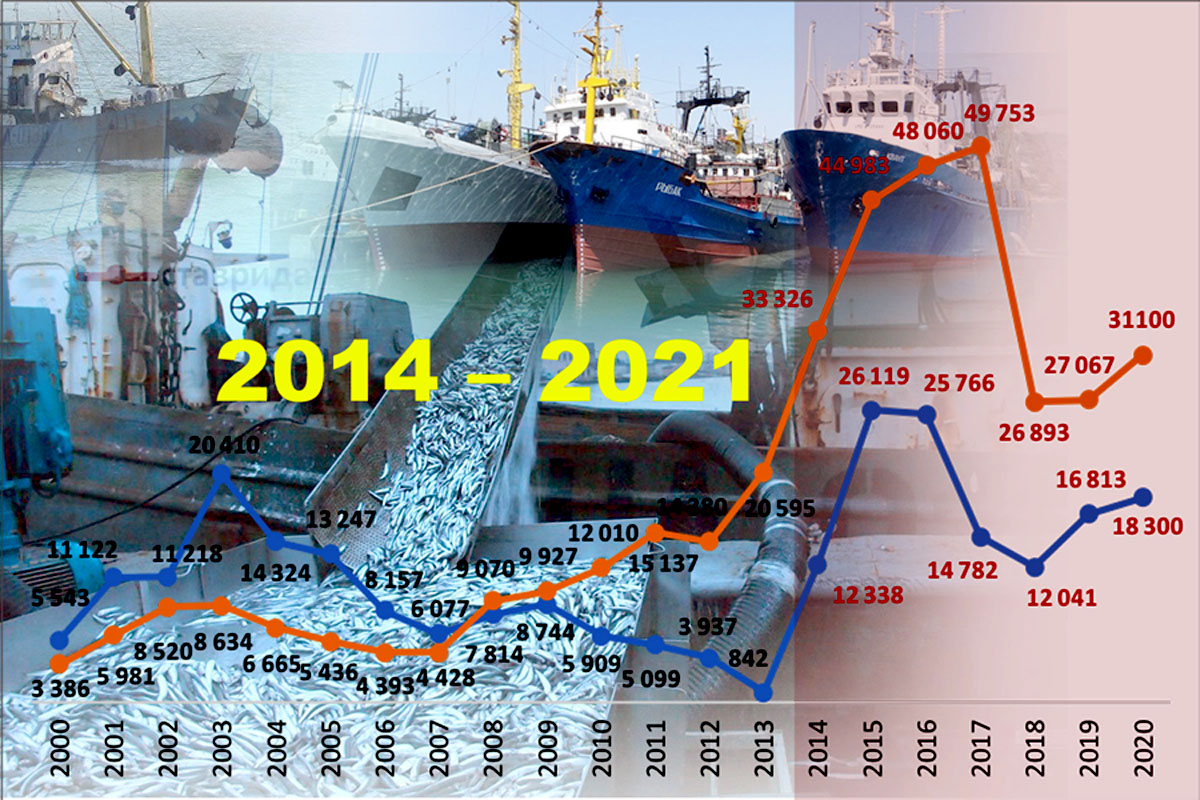
The Monitoring Group of BlackSeaNews
and the Black Sea Institute of Strategic Studies
presents an updated series of articles
«The Socio-Economic Situation in Occupied Crimea in 2014 – 2021»
Back in the USSR. The Reverse Restructuring of the Crimean Economy / 2014-2021
The "Trophy Economy". Militarization as a Factor of Industrial Growth / 2014-2021
The "Trophy Economy". The Development of the Stolen Ukrainian Black Sea Shelf / 2014-2021
The Crimean "Trophy Economy": The Sale of Ukrainian Property. An Updated Review for 2014 – 2021
The Occupied Crimean Tourism / 2014-2021
Occupied Crimea. Exports and Imports / 2014-2021
The Banking System of Crimea: What is Really Happening on the Occupied Peninsula (Updated)
Investment. What the "Crimean" Federal Target Programme Finances / 2014-2021
«Migration weapons»: the replacement of the Crimean population with Russian
Water in Occupied Crimea / 2014-2021
The Crimean Budget. Small Business. Salaries and Pensions / 2014-2021
* * *
Prior to the occupation of Crimea, Russia harvested about 30 thousand tonnes of biological resources in the Black Sea and the Sea of Azov. That was the combined landings volume of the enterprises in Krasnodar Krai, Rostov Oblast, Stavropol Krai, Volgograd Oblast, and the Republic of Adygea.
From 2007 to 2013, the volume of landings remained roughly stable. For several months of 2014, the Crimean fisheries were left without licences and did not go to sea. But even in that first year of the occupation, the total volume of Russia’s landings in the Black Sea and the Sea of Azov grew significantly due to the addition of Crimean landings (see figures).
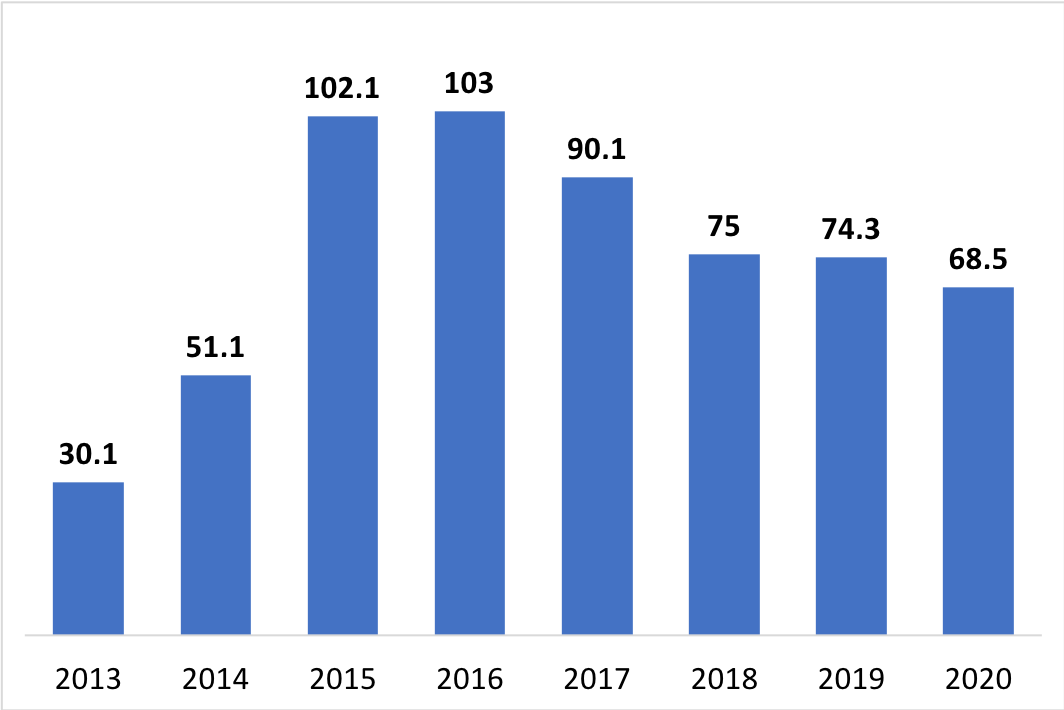
In recent years, Russia has stopped publishing data on the actual "Crimean landings," but we can easily estimate the scale of the occupiers' acquisitions in this area. Upon comparing Russian landings of certain species of commercial fish only in the Black Sea, we can see that in five years (2015-2019), the landings of the sprat increased 3.9 times compared to those of the last five pre-war years (Figure 2), the landings of the turbot – grew 9.2 times, and of the horse mackerel – rose 20 times (Figure 3).
As reported by the Russian Federal Agency for Fisheries, the number of fishing companies harvesting the Crimean aquatic biological resources has more than tripled since «the accession of the peninsula to Russia». The Azov-Black Sea territorial administration of Rosrybolovstvo explained that trend with the «specifics of the tax and licencing policy».
Until March 2014, 89 enterprises and individual entrepreneurs had been engaged in fishing in Crimea. By the end of 2015, their number had increased to 181, and by the end of 2016 — to 267. Since 2017, there are already at least 300 of enterprises and individual entrepreneurs.
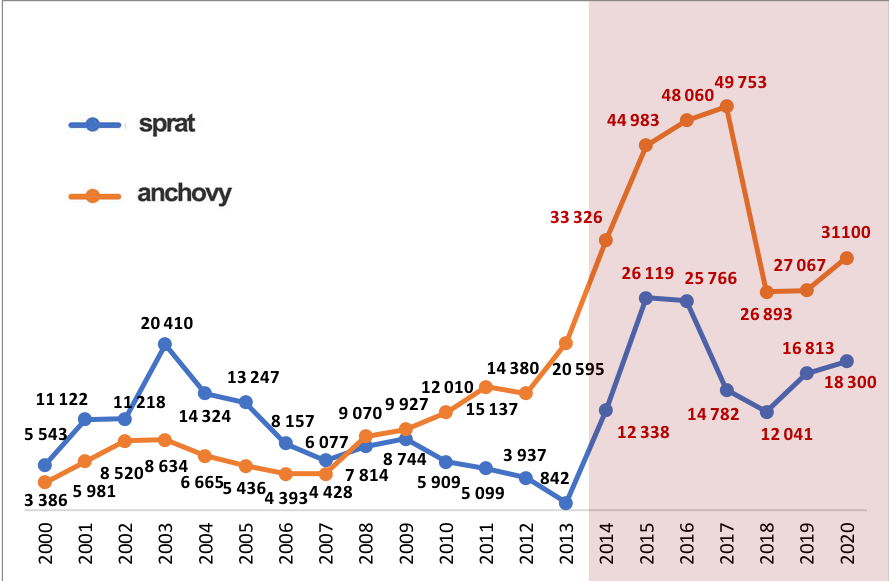
Before the occupation, the Crimean fishing industry used 42 registered fleet vessels. As of 1 April 2015, 32 fishing vessels had been granted the right to sail under the flag of the Russian Federation and to own Russian-designed vessels. In August 2016, the occupation authorities reported that the fishing fleet re-registration process had been almost completed: 38 Crimean fishing vessels had been registered under the Russian flag. That is, there had been no increase in the size of the local Crimean fishing fleet.
Thus,
the multi-fold rise in the number of fishing enterprises operating in the waters and on the quotas of annexed Crimea has occurred only due to the Russian business entities.
Even a cursory review of the list of those who have obtained the fishing permits shows, for example, that the Simferopol-based Krym-Resurs OOO was founded in January 2015 by the Mangust OOO from the Russian city of Kurgan, while the company with the ambitious name Velikiy Krym OOO (The Great Crimea) was founded in July 2015 by two Chechnya residents.
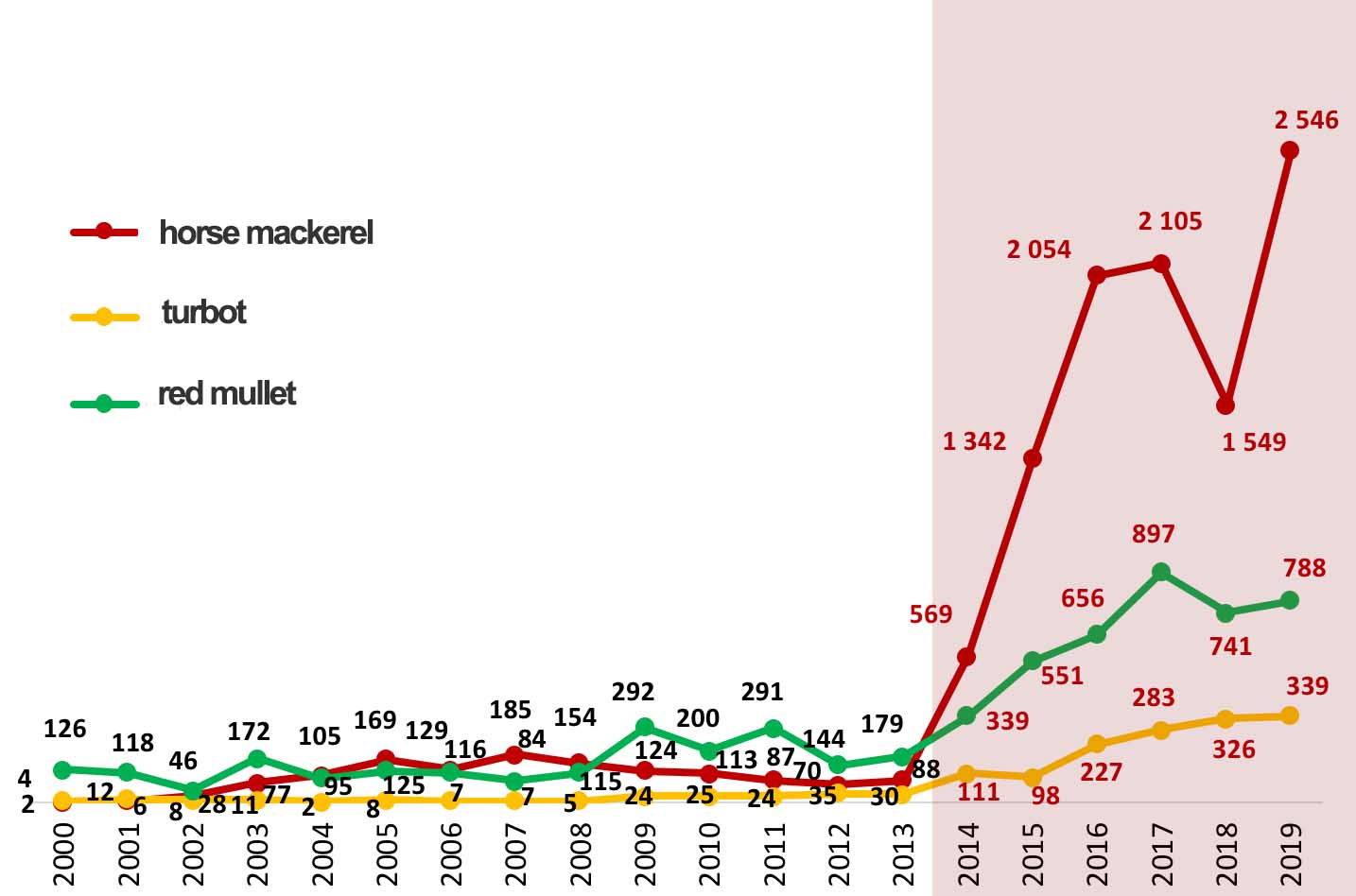
According to the Monitoring Group of the Black Sea Institute of Strategic Studies and the online publication www.blackseanews.net, commercial fishing off the coast of occupied Crimea in the Black Sea and the Sea of Azov is carried out by at least 94 medium-sized industrial vessels.
Moreover, the authors constantly record mass coastal trawling by groups of seiners up to 10 vessels at the same time. These seiners arranged in an echelon formation sail at a distance of several hundred metres from one another. Their predatory fishing practices (demersal trawling with pelagic trawls) adversely affect the Crimean coast from Kerch to Yevpatoria, starting as close as 100-200 metres from the shore.
* * *
The Monitoring Group of the Black Sea Institute of Strategic Studies and BlackSeaNews forecasts the following developments in the field of fisheries of the RF in the Azov-Black Sea region.
In the "Crimean sector" of the Black Sea, the occupying power will significantly increase the catch of the Black Sea turbot in the occupied part of the maritime exclusive economic zone of Ukraine – off the west coast of Crimea (the Kalamitska Bay) and in the area from the Crimean Cape Tarkhankut to Zmiinyi Island (see Figure 4).
This "Russian fishing strategy" will rely on the offshore areas of natural gas production on the sea shelf, seized in 2014 and guarded by the Black Sea Fleet and special forces of the RF, which coincide with the main catch areas of the Black Sea turbot.
Due to the significant increase in salinity of the Sea of Azov (caused by reduced runoff of the Don and Kuban rivers) and predatory fishing off the coast of Crimea in recent years, the anchovy will lose its industrial significance. Therefore, Russia's efforts will focus on catching anchovies off the coast of unrecognized Abkhazia.
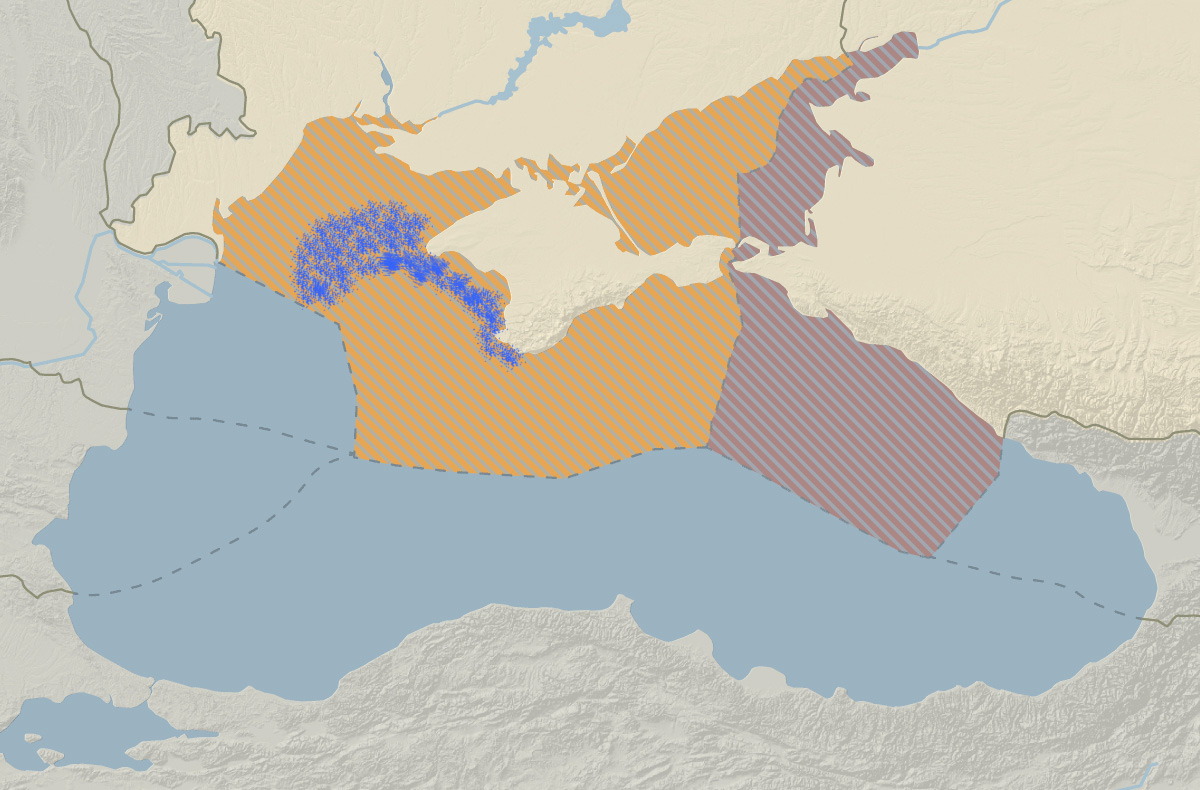
* * *
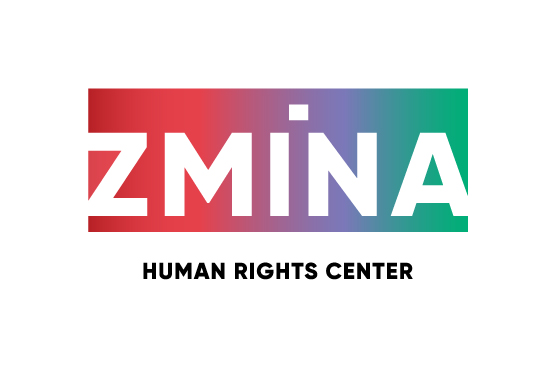
This article has been published with the support of ZMINA
Human Rights Centre.
The content of the article is the sole responsibility of the authors.
More on the topic
- 21.08.2023 Peculiarities of the 2023 Crimean Holiday Season — a «Tourism» in Camouflage
- 06.08.2023 Crimea During the Great War. Part 2. Extreme Tourism or «New Types of Tourism» and Tourist Numbers (2)
- 21.07.2023 Crimean Titan: Under a Russian Holding or a Ukrainian Tank?
- 12.06.2023 Crimea during the Great War. The situation in the occupied Crimea in 2022-2023. Military Context (1)
- 23.11.2021 Occupied Crimea. Exports and Imports / 2014-2021
- 23.11.2021 Water in Occupied Crimea / 2014-2021
- 23.11.2021 The Crimean Budget. Small Business. Salaries and Pensions / 2014-2021
- 21.11.2021 The "Trophy Economy". Militarization as a Factor of Industrial Growth / 2014-2021
- 21.11.2021 Back in the USSR. The Reverse Restructuring of the Crimean Economy / 2014-2021
- 20.11.2021 The "Trophy Economy". The Development of the Stolen Ukrainian Black Sea Shelf / 2014-2021
- 20.11.2021 The Occupied Crimean Tourism / 2014-2021
- 20.11.2021 Investment. What the "Crimean" Federal Target Programme Finances / 2014-2021